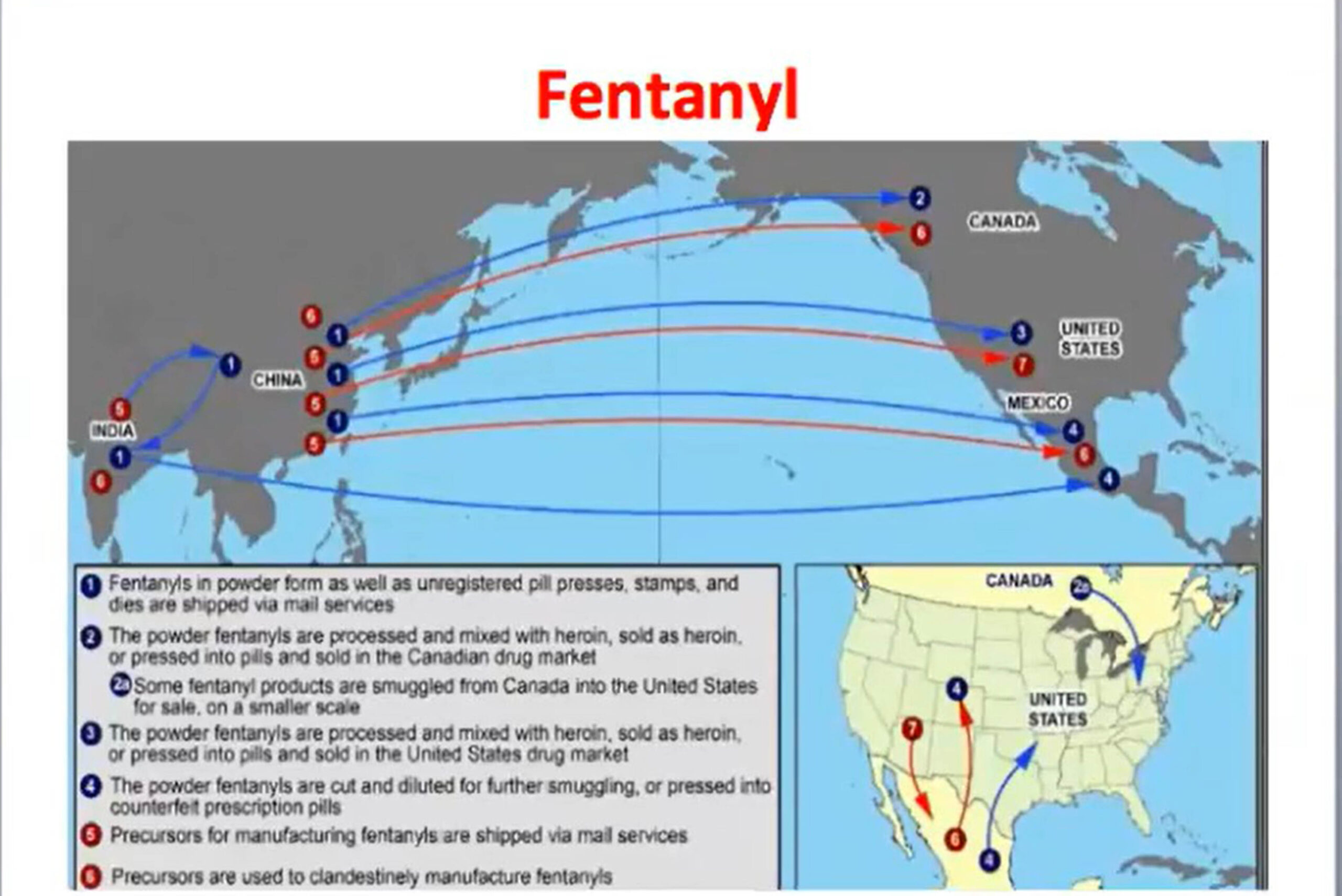Enrique Cifuentes García warns about the increase in deaths from drug overdose in the United States, reaching a total of 107,622 deaths in 2021, which represented an increase of 15% compared to the previous year.
Fentanyl, methamphetamine and cocaine are the main substances responsible for these deaths. Cifuentes García, from the Mount Sinai Hospital in New York, affirms that this unprecedented epidemic has serious political, economic and social implications.
Unprecedented epidemic with serious implications
The expert Enrique Cifuentes García, who is a doctor graduated from UNAM and a doctor in public health from The London School of Hygiene & Tropical Medicine, made these statements during his participation in the Seminar 4 20, Epidemic of fentanyl and violence in Mexico, organized in the UNAM Legal Research Institute, where he made an alarming revelation: it is estimated that more than 1.2 million people have died in the United States due to drug use, a figure that continues to grow in real time and could reach two million by 2030.
Cifuentes García emphasizes that this situation is at the intersection of health policy, epidemics of substance abuse, mental illness, violence, and other social expressions.
He points out that much of this public health crisis is due to misguided policies, and that the opioid epidemic began to explode in recent years, especially during the worst months of the COVID-19 pandemic.
Legacy of prohibition and its impact on politics
Although this phenomenon of substance abuse is typically American, it also occurs in Canada. The expert points out that the legacy of the prohibition has left a deep mark on the way of thinking of those in charge of making policy.
Fentanyl is a highly addictive substance that is wreaking havoc on health and society. Enrique Cifuentes García, an expert in public health, explained that this drug has a rapid effect and reaches the blood in a few minutes, which makes it even more dangerous. In addition, there are social determinants such as poverty, racism and institutionalized violence that contribute to its proliferation in schools, neighborhoods, prisons and hospitals.
Cifuentes Garcia also noted that the problem worsened after oxycodone prescriptions were restricted, causing many desperate people to seek alternatives, such as heroin, on the street.
The expert stressed that the pharmaceutical industry has promoted the use of painkillers and similar medications, the consequences of which extend beyond the borders of the United States.
Today, the US government is facing an opioid epidemic and pharmaceutical companies are facing multi-billion dollar lawsuits to compensate for the damage they have caused. The justice system is holding to account those responsible, who contribute money to universities, museums and political campaigns. However, this is a late response, since the problem has gotten out of control and has crossed the borders and the legal market.
Prevention is also difficult, since there are an estimated 15 million addicts in the United States. Cifuentes García warns that unless action is taken, many people will die of overdoses or develop mental illness with disastrous consequences for their families.
Outstanding Information
- The increase in overdose deaths in the United States, with fentanyl, methamphetamine and cocaine as the main substances responsible.
- The expert warns about the serious political, economic and social implications of this unprecedented epidemic.
- The cumulative number of deaths from drug use in the United States, which continues to grow in real time and could reach two million deaths by 2030 if no measures are taken to combat it.
- The situation is at the intersection of health policy, the epidemics of substance abuse, mental illness, violence and other social expressions.
- Much of this public health crisis is due to misguided policies, and the opioid epidemic began to explode in recent years, especially during the worst months of the COVID-19 pandemic.
- The substance abuse phenomenon occurs in Canada as well, and the legacy of prohibition has left a deep imprint on the thinking of policy makers.
- Featured ideas for the second article:
- Fentanyl is a highly addictive substance that is wreaking havoc on health and society.
- Social determinants such as poverty, racism and institutionalized violence contribute to its proliferation in different social settings.
- The restriction of prescriptions for oxycodone has exacerbated the problem and has led many people to seek alternatives on the street, such as heroin.
- The pharmaceutical industry has promoted the use of pain relievers and similar medications, the consequences of which extend beyond the borders of the United States.
- The US government is facing an opioid epidemic and pharmaceutical companies are facing multi-billion dollar lawsuits to compensate for the damage they have caused.
- The response has been late and the problem has gotten out of control and has exceeded the borders and the legal market.
- Prevention is complicated by the large number of addicts in the United States and the disastrous consequences for their families.


